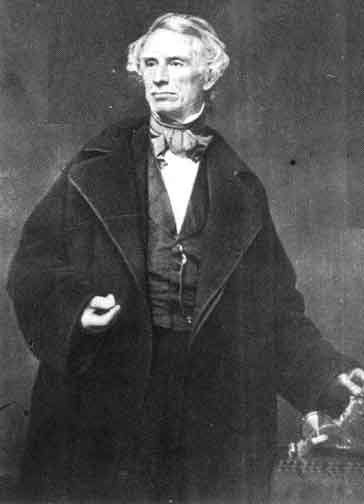Morse, Samuel

Painter and Inventor
(1791-1872)
Born on April 27 1791, in Charlestown, Massachusetts, Morse studied at Yale College, graduating in 1810. The following year he accompanied the portrait painter Washington Allston on a voyage to England, where he studied under Allston and Benjamin West at the Royal Academy. When he returned to the U. S. in 1815, Morris‚ high ambitions were shattered as he discovered that the American public had little taste for all but portrait art.
From 1818 to 1821, he spent winters painting portraits in Charleston, South Carolina. Settling in New York in 1823, he continued to paint for another decade. Although his earnings were meager and irregular, his social and intellectual life was altogether satisfactory. And in 1826 he became involved in the formation of the National Academy of Design. Serving as president of the Academy until 1842, he led an aggressive campaign against the conservative practices of the older American Academy of Fine Arts.
Failing to obtain commissions for portraits after 1832, he started to concentrate on a new interest of his˜the telegraph. He developed the finger-key transmitter, the embossing stylus and sound receivers, and the Morse code by 1836.
In 1843, Congress appropriated $30,000 to construct a telegraph line from Washington, D. C., to Baltimore, and on May 24, 1844, Morse tapped out the first message˜"What hath God wrought!"˜from the Supreme Court chamber in the Capitol. Soon after, several telegraph companies constructed a national communications network which was consolidated into the Western
In 1858, Morse assisted Cyrus Field in the laying of the transatlantic telegraph; and three years later, he again became president of the National Academy of Design. Morse spent the rest of his life as an active philanthropist and died in New York City on April 2, 1872.
 >
>